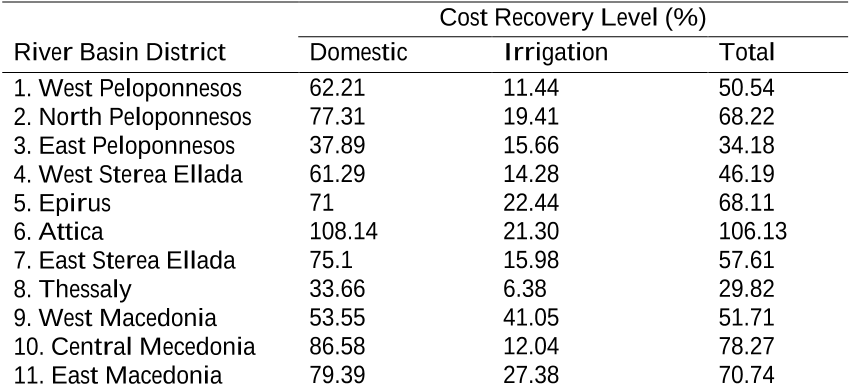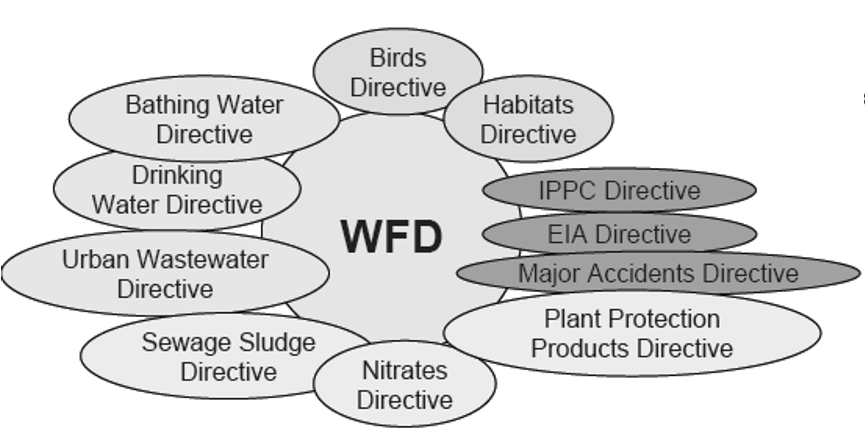
1
Chapter 1: A Bird’s Eye View of the Greek Water Situation: The Potential for
the Implementation of the EU WFD.
1
Koundouri, P.,
2
Papandreou, N.
3
Remoundou, K.,
4
Kountouris, Y.
1
Athens University of Economics and Business, GREECE
2
Andreas G. Papandreou Foundation, GREECE
3
Aberystwyth University, UK
4
Imperial College London, UK
The Water Framework Directive (WFD) was formulated for addressing the
weaknesses of the previous water-related directives. The main steps that WFD
involves could be summarised in the setting of ecological standards, the identification
of anthropogenic pressures and the adoption of corrective measures. This introductory
chapter describes the water situation in Greece and assesses the potential of the timely
implementation of the European Union’s (EU) WFD. In this context, the significance
of Asopos River Basin (RB) is put into perspective. More analytically, the chapter
presents: (a) the employed methodology that enables rapid assessment of the status
quo of the water situation in each Greek catchment, as compared to the requirements
and targets of the EU WFD, (b) the implementation of this methodology on each of
the fourteen Greek River Basin Districts (RBDs) and (c) relevant empirical results.
The main objective of the chapter is to present the rapid-appraisal methodology that
was developed for the estimation of the cost-recovery level for water services in the
fourteen Greek RBDs. Results from this ‘quick appraisal’ clearly highlight the need
for reforms in the current pricing policy and preparation of a package of measures, as
proposed in Chapters 9 and 10, in order for the water bodies to reach good ecological
status and the water management to ensure full recovery of the cost of water services
as required under article 11 of the WFD.

2
1. Introduction
General overview of the WFD
It is internationally recognised that water resources are necessary inputs to production
in economic sectors such as agriculture (arable and non-arable land, aquaculture,
commercial fishing, and forestry), industry (power generation) and tourism, as well as
to household consumption (UNEP 2005).
Policy makers at European level have recognized the need to approach human activity
and water resources in an integrated manner to achieve sustainable water resources
management as laid down in the recently adopted EU-Water Framework Directive
(WFD) (CEC 2000). The WFD (2000/60/EC) was adopted in October 2000, and it
establishes a framework for European Community action in the field of water policy.
The importance of water is crystallised in the first recital of the Directive. It states that
“[W]ater is not a commercial product like any other but, rather, a heritage which must
be protected, defended and treated as such” (CEC 2000, p. I.327/1).
The aim of the WFD is to establish a framework for the protection of inland surface
waters, transitional waters, coastal waters and ground waters. Whereas previously
adopted water-related EU Directives addressed individual issues, the WFD aims to
provide an integrated framework for water resources management, both in terms of
quality and quantity, to achieve the objective of good water status for all EU waters.
Figure 1 presents the integrated character of WFD.

3
Figure 1: WFD, a truly integrated Directive
Hence, an examination of water policy through previous water directives, including
the Nitrates Directive and the Bathing Water Quality Directive, demonstrates how
current policy evolved from an emphasis on public health protection to environmental
protection and finally, as formed today, to the notions of ‘sustainable use’ of water
and an integrated ecosystem-based approach to water management. What is achieved
from these changes is that although in the past EU legislation on water was focused
on specific environmental problems related to water quality as far as for example
drinking, bathing or freshwater fishing activities are concerned, emphasis is now
placed on the improvement of the ecological quality of water and its eco-system
functions, by using a broader and integrated approach involving both environmental
quality objectives coupled with emission limit values.
The Directive calls for integrated catchment management plans to be prepared for all
river basins in order to achieve Good Ecological Status (GES) in all EU waters by
2015. Particularly, according to Article 2 (18), ‘[G]ood surface water status’ refers to
the status achieved by a surface water body when both its ecological status and its

4
chemical status are at least ‘good’. As such, the Directive aims at achieving a
minimum standard of ‘good’ and ‘non-deteriorating’ status, and sets common
approaches and goals for water management in the EU Member State countries
adopting a broader measure of water quality.
The suggested means to achieve that goal is the planning at the natural hydrologic
(river basin) level/unit instead of other administrative or political boundaries and the
implementation of pollution-control measures in cases where existing legislation on
water quality and pollution is proved inadequate. Hence, an important change in water
management policy is that the measures to achieve WFD objectives will be co-
ordinated at the level of River Basin District (RBD) that will correspond to large
catchment basins incorporating the smaller sub basins. In the case that a basin crosses
national boundaries, the responsibility should be shared between governments and
one single vision should be created.
For the assessment of quality, three main characteristics are considered. The first is
that of biological quality elements. The parameters to be measured for river, lake and
transitional waters are composition and abundance of aquatic flora (macrophytes) and
benthic fauna (invertebrates) as well as the composition, abundance and age of
structure of fish. In the case of the marine environment, instead of the ‘fish’ parameter
the composition, abundance and biomass of phytoplankton is considered. The other
two quality characteristics refer to elements that support biological elements. One is
the physico-chemical elements such as condition of thermal, oxygen, salinity, acid,
nutrient and transparency, and the other is hydromorphological elements that can
include in the case of a river for example, the quantity and dynamics of water flow, its

5
continuity, depth and width variation, and structure of the riparian zone. The
Directive’s goal is diversified in the case of ‘artificial/modified’ waters serving
economic activities where the GES turns to ‘good ecological potential’ and in the case
of ‘protected zones’ (i.e., areas designed for the protection of habitats or species) and
nutrient sensitive areas where more stringent requirements may be applied.
For its implementation, the Directive calls for the authority of each RBD to prepare
and put into action a six year River Basin Management Plan that will include a
description of the district’s characteristics, the identification of protected areas, the
impact and pressures of human activity on water status (point source and diffuse
pollution, abstraction and land-use patterns), an economic analysis of the cost of the
water, an estimation of the effects of existing legislation to achieve the objectives, and
information on measures taken to achieve goals. In implementing the measures, MS
are asked to take account of the principle of full recovery of costs of water services
that will provide incentives for the efficient use of water by different users. At this
stage, according to Article 14, public participation of all interested parties should
contribute to the identification of measures to be adopted.
It should be noted that in this context, monitoring is central to the Directive and
according to Article 8 includes several monitoring requirements, not only to
determine the classification of waters’ status but also to continue assessing the
necessity for additional measures or ensure that mitigation measures are implemented.
Thus, the main steps that the WFD involves could be summarised in the setting of
ecological standards, the identification of anthropogenic pressures, and the adoption
of corrective measures. Furthermore, the main change and innovation that the





